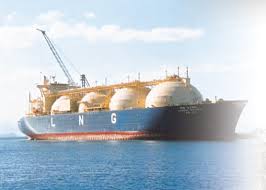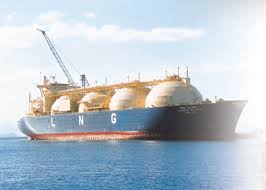
Iran has pledged to bring five LNG projects on-stream in the next three years. This was announced very recently by Hamidreza Araqi, Chief Executive of the National Iranian Gas Company (NIGC).
The short period to bring the projects on-stream would be a remarkable achievement in itself, say experts.
Stating that Iran holds the world’s largest gas reserves, Press-TV Iran ran the story last week. The TV report added that plans to build Iran’s first facility for freezing gas for export by special tankers had been hampered by Western sanctions.
Iran holds the world’s second largest proven reserves of natural gas at 1,201 trillion cubic feet (tcf) according to the latest US Energy Information Administration report on Iran’s energy sector. The world’s largest reserve is in Russia with 1688 tcf of natural gas. This reserve has given Moscow considerable geopolitical leverage in Europe in the past decade mostly under President Vladimir Putin. However with the return of Iran into the global mainstream of crude oil and natural gas, that leverage that Russia enjoys is expected to fade away.
With with 872 tcf of LNG, Qatar is third on the list followed by the US, with 339 tcf of proven natural gas reserves.
The Iranian authorities are hopeful that in the next one-and-a-half years, the most advanced project, Iran LNG would become operational, Araqi said. With a capacity to produce 10 million metric tons a year, construction for the the Iran LNG had commenced in 2007.
“Among the five LNG plants under construction, the so-called Iran LNG has 60% physical progress and we hope to complete it in the next one and half years after finding an investor and enter the LNG market thereafter,” Araqi said.
He added that negotiations are underway with five neighboring countries for starting or boosting gas exports.
“Deals for starting gas flow to Iraq and Pakistan in the near future have been finalized while there are talks to build pipelines to India, Oman and Kuwait and additional capacities for exports to Turkey and Iraq,” he said.
“Iran’s gas production capacity will reach 330 bcm a year in 2017 which will make it possible to increase exports,” Araqi pointed out.
Spot prices for LNG broke new ground, reaching over $20 per million British thermal units (MMBtu), in the Asia-Pacific region in February of 2014. However since then the prices have cooled down somewhat and the price for January delivery are at $7.30 per MMBtu. This is a dip of around 60% since the start of 2014.
Some experts are predicting a further fall in the spot price of LNG and expect it to be around $6 per MMBtu in 2016 and falling further to the $5 range for the next two years. However prices could easily dip and stay in the $4 MMBtu range in case there is a slowing demand growth from Asia, which accounts for two-thirds of total global LNG demand.
In this context, experts predict that on-streaming of five additional projects would only increase supply in the market with possibilities of the prices going further south.
(Source:www.forbes.com)
The short period to bring the projects on-stream would be a remarkable achievement in itself, say experts.
Stating that Iran holds the world’s largest gas reserves, Press-TV Iran ran the story last week. The TV report added that plans to build Iran’s first facility for freezing gas for export by special tankers had been hampered by Western sanctions.
Iran holds the world’s second largest proven reserves of natural gas at 1,201 trillion cubic feet (tcf) according to the latest US Energy Information Administration report on Iran’s energy sector. The world’s largest reserve is in Russia with 1688 tcf of natural gas. This reserve has given Moscow considerable geopolitical leverage in Europe in the past decade mostly under President Vladimir Putin. However with the return of Iran into the global mainstream of crude oil and natural gas, that leverage that Russia enjoys is expected to fade away.
With with 872 tcf of LNG, Qatar is third on the list followed by the US, with 339 tcf of proven natural gas reserves.
The Iranian authorities are hopeful that in the next one-and-a-half years, the most advanced project, Iran LNG would become operational, Araqi said. With a capacity to produce 10 million metric tons a year, construction for the the Iran LNG had commenced in 2007.
“Among the five LNG plants under construction, the so-called Iran LNG has 60% physical progress and we hope to complete it in the next one and half years after finding an investor and enter the LNG market thereafter,” Araqi said.
He added that negotiations are underway with five neighboring countries for starting or boosting gas exports.
“Deals for starting gas flow to Iraq and Pakistan in the near future have been finalized while there are talks to build pipelines to India, Oman and Kuwait and additional capacities for exports to Turkey and Iraq,” he said.
“Iran’s gas production capacity will reach 330 bcm a year in 2017 which will make it possible to increase exports,” Araqi pointed out.
Spot prices for LNG broke new ground, reaching over $20 per million British thermal units (MMBtu), in the Asia-Pacific region in February of 2014. However since then the prices have cooled down somewhat and the price for January delivery are at $7.30 per MMBtu. This is a dip of around 60% since the start of 2014.
Some experts are predicting a further fall in the spot price of LNG and expect it to be around $6 per MMBtu in 2016 and falling further to the $5 range for the next two years. However prices could easily dip and stay in the $4 MMBtu range in case there is a slowing demand growth from Asia, which accounts for two-thirds of total global LNG demand.
In this context, experts predict that on-streaming of five additional projects would only increase supply in the market with possibilities of the prices going further south.
(Source:www.forbes.com)





